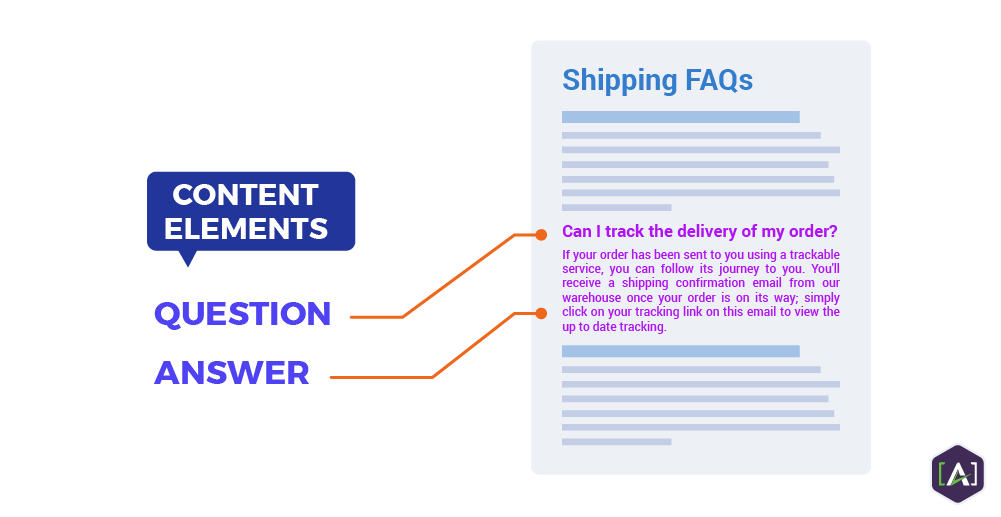As content engineers, we make big promises. We stand by the assertion that through our methodology, we can make content easily deliverable, discoverable, adaptable, reusable, and customizable.
But how? What makes it all possible? It all comes down to modular content.

Many
content management systems still support the traditional methodology where content is contained in large, unorganized blocks without distinction or structure. To make content “modular” means breaking those large units up into small, meaningful elements that can then be reconfigured in an endless number of ways.
Modular Content is not a new idea, but it has become increasingly more important as the landscape has shifted and content requires adaptation and flexibility in ways that it never has before. This trend shows no sign of slowing. Content production is growing exponentially and so are the number of channels and devices to distribute it.
What is a Content Element?
Content Elements are the main constituent of
Content Types, a unique container of
Content Structure.

Some examples of content elements are:
- Title
- SEO descriptions
- Image
- Publish date
- Section text
- Question
- Short or long answer
How Content Elements Fit into a Content Model
As the complexity of the content model grows, documenting accurate and detailed information pertinent to implementation becomes more important.
It may be useful to capture this information in a spreadsheet or other tool to supplement the high-level conceptual content model outlined in earlier stages of the process.
[A] helps clients design, build, and maintain content models. Connect today for professional help.
How Content Elements Fit into a CMS
With a content model, the developer has a roadmap to configure the current CMS to support modular content—or recommend that another CMS be used altogether.

Content types will then be used to create templates with the content elements as individual fields within each template. And, content writers are tasked with creating content items from those templates.
Making Content Elements Work for You
We get it. Restructuring an entire content ecosystem is a big decision. But modular content is intelligent content. By taking the time to break down and model your content assets, you’re ultimately creating content that is:
Flexible & Adaptable
With modular content, a customized layout doesn’t have to be created every time a new content distribution platform reaches the market. Content that is independent from its presentation layer and developed as separate components can easily be pieced together and adapted to accommodate new channels, platforms, and devices—even those that haven’t been invented yet.
Structured & Consistent
Modular content is structured into a limited number of content types. The consistent and predictable visual cues that they create instantly communicate what is being read and where to find certain information. In an environment where consumer attention is an increasingly precious commodity, organized scannable content has become not only a competitive advantage but a necessity.
Internally and Externally Discoverable
When content is assembled from individual elements, each component or element can be tagged with semantic
metadata. Semantic metadata allows computers to identify the meaning of a piece of content. This makes isolating and manipulating individual content elements on a site easy.

For example, product features can be updated instantly on all pages across all channels, or an article summary can be automatically pulled into a preview on the homepage.
Customized & Personalized
With so much content out there, getting relevant content in front of the right people at the right time is key to cutting through the noise. With metadata-rich modular content, alternate fields of information can be created and the most relevant one presented based on location, preferences, past browsing history and any number of factors or audience segments.

Future-proof
Associating semantic metadata with modular content is the future of all content.
Currently, semantic metadata gives search engines more precise data to deliver to the user. This can then be presented on search result pages in the form of rich snippets or as an answer that voice assistants like Alexa can read. However, this is only a preliminary and modest application of semantic metadata and modular content.
An important application will be the Internet of Things, or IoT. As ‘things’ can take many shapes and forms, modular content will become a necessity for content to be adaptable to an increasing landscape of rendering options.
For machines, from PC’s, watches, fridges, interactive mirrors, etc. to become ‘intelligent’, they have to understand ‘meaning’. Associating semantic metadata with modular content is one of the many components, together with artificial intelligence (AI), machine learning (ML), and natural language processing (NLP), that make this happen.
A fast expanding application of this are conversational AI Bots. But this is only one application of the coming IoT revolution that’s just around the corner.
Bridging the Gap
For computers to understand what’s expected of them, we have to speak their language.
Content elements have to be defined by standard values that machines can comprehend and act on. The constraint through which a content element is defined in the CMS is called a content attribute.
Read What are Attributes? to learn more about how attributes work within the practice of content modeling.
Contact Us for a Free Consultation.